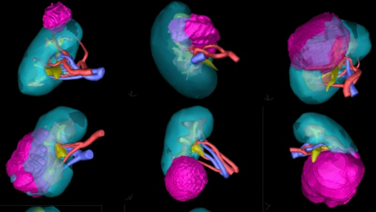Urology
Introduction
Our Urologist cover different subspecialties within Urology and offer professional assessment and suitable treatment for various urological problems.
Our Services
Diseases to be seen
- Urological cancer
- Prostate / Bladder / Kidney / Testicular / Penile cancer
- Benign prostatic hyperplasia
- Voiding dysfunction / urinary incontinence
- Urinary tract infection / Haematuria
- Urinary stone diseases
- Men’s health services
Investigations in Urology Center
- Urinalysis
- Uroflowmetry
- Urodynamic studies
- Ultrasound kidney, prostate, scrotum
- Bladder volume assessment
Day / Office procedures
- Flexible cystoscopy
- Transperineal prostate biopsy
- MRI-ultrasound fusion prostate biopsy
- Extracorporeal shockwave lithotripsy
- Circumcision
- Vasectomy
In-patient treatment & operative procedures
- Urological cancer surgery (Open / Minimally invasive)
- Transurethral resection of bladder tumour
- Transurethral resection of prostate (monopolar / bipolar / Laser)
- Water vapour thermal therapy of the prostate
- Endoscopic stone surgery
- Scrotal / penile surgery
- Hernia repair
Fees & Packages
Interviews
View All13 Feb 2025Dr CHIU Ka Fung, Peter
健康關注組︰前列腺唔再怕切!新技術唔再失禁雄風還在 (Only Available in Cantonese)
01 Nov 2024Dr TEOH Yuen Chun, Jeremy
一種男性無可避免的病|香港腎癌人數急升一倍|玩過山車震碎腎石?|甚麼一起吃易結石?|腎虛與性功能掛鉤?| (Only available in Cantonese)
07 Jul 2024Dr NGO Chang Chung
Kidney cancer 101: symptoms, treatments new and old – and a mother’s journey to recovery
Health Knowledge
Medical Team
View AllCUHK Professorial Team
CUHKMC Medical Team

 View Profile
View Profile- Consultant
- Specialist in Urology
Clinical Associate Professor (honorary), Department of Surgery, Faculty of Medicine, CUHK
 View Profile
View Profile- Consultant
- Specialist in Urology

Dr NGO Chang Chung
View Profile- Consultant
- Specialist in Urology
Clinical Assistant Professor (honorary), Department of Surgery, Faculty of Medicine, CUHK
Honorary Clinical Assistant Professor, Department of Surgery, LKS Faculty of Medicine, HKU
















